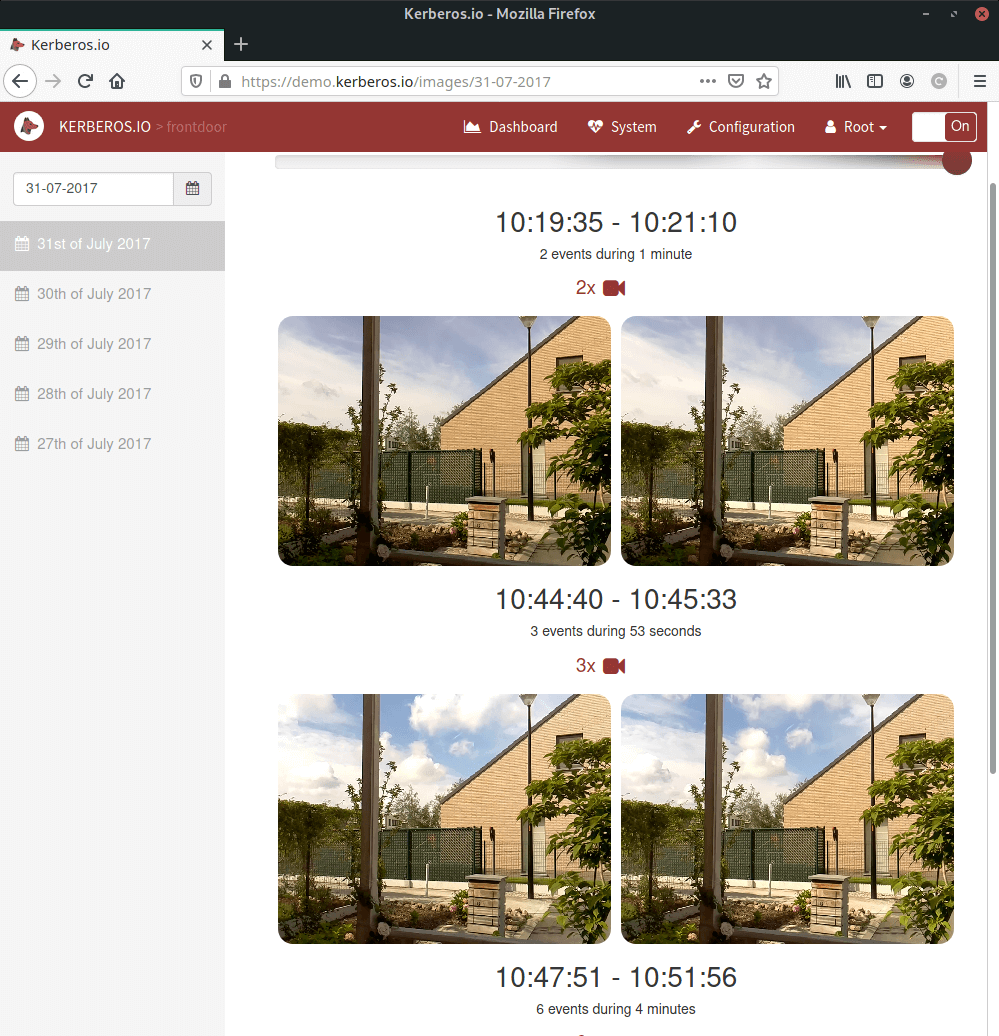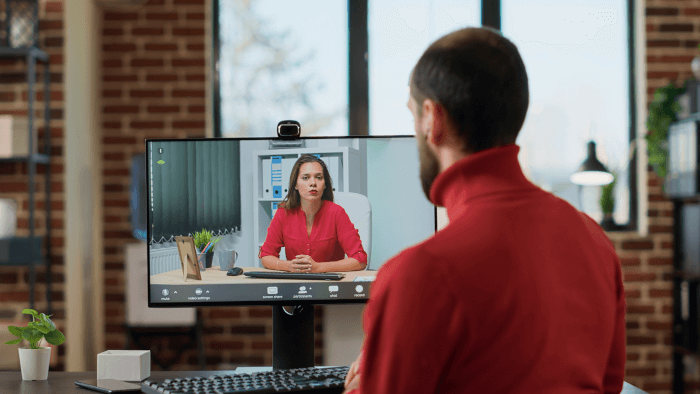Kerberos is a video surveillance solution, that uses computer vision algorithms to detect changes, and that can trigger actions (notifications, api, etc). It comes in two flavors, Kerberos Open Source and Kerberos Enterprise. Kerberos can be deployed to any Linux OS, Docker, or cluster such as Kubernetes.
Both versions have a web interface (front-end) and a video processing engine (back-end). The front-end allows a user to modify specific settings and watch recordings in a easy-to-use interface. The back-end is a solution that processes the camera feed with computer vision algorithms to detect motion, and makes recordings and/or execute specific actions. Kerberos supports any type of IP-camera (RTSP/ONVIF), USB (V4L2) and the popular Raspberry Pi camera.
It’s a stable and feature-rich video surveillance system.
Kerberos Open Source comes with different installation flavours (it includes both the machinery and web repository).
Features include:
- Access and configure your easy to use and professional video surveillance solution with your smartphone, tablet or laptop to keep an eye on your property 24/7. Deploy to Docker or your IoT device.
- High availability in place to make sure your video security system stays available, in any circumstance.
- Attach one or more cameras to Kerberos.cloud and receive real-time notifications.
- The web is responsible for the visualization. It’s a GUI which helps the user to find activity at a specific period, configure the machinery, view a live stream, see system information and much more.
Website: kerberos.io
Support: GitHub Code Repository
Developer: kerberos.io
License: Creative Commons Attribution-NonCommercial-ShareAlike 4.0 International (CC BY-NC-SA 4.0)

The machinery is the processing engine of Kerberos Open Source. It’s an image processing framework, written in C++, who benefits from other third party libraries (OpenCV, etc). It takes images from the type of camera (USB-, IP- or RPi-camera) you’ve configured in the configuration files and executes one ore more algorithms and post-processes (e.g. save a snapshot). The machinery is written in the C++ programming language. Learn C++ with our recommended free books and free tutorials.
The web (the GUI) is written in PHP using the extremely popular PHP Framework Laravel, and JavaScript using the client-side framework BackboneJS. Learn PHP with our recommended free books and free tutorials. Learn JavaScript with our recommended free books and free tutorials.
| Popular series | |
|---|---|
| The largest compilation of the best free and open source software in the universe. Each article is supplied with a legendary ratings chart helping you to make informed decisions. | |
| Hundreds of in-depth reviews offering our unbiased and expert opinion on software. We offer helpful and impartial information. | |
| The Big List of Active Linux Distros is a large compilation of actively developed Linux distributions. | |
| Replace proprietary software with open source alternatives: Google, Microsoft, Apple, Adobe, IBM, Autodesk, Oracle, Atlassian, Corel, Cisco, Intuit, and SAS. | |
| Awesome Free Linux Games Tools showcases a series of tools that making gaming on Linux a more pleasurable experience. This is a new series. | |
| Machine Learning explores practical applications of machine learning and deep learning from a Linux perspective. We've written reviews of more than 40 self-hosted apps. All are free and open source. | |
| New to Linux? Read our Linux for Starters series. We start right at the basics and teach you everything you need to know to get started with Linux. | |
| Alternatives to popular CLI tools showcases essential tools that are modern replacements for core Linux utilities. | |
| Essential Linux system tools focuses on small, indispensable utilities, useful for system administrators as well as regular users. | |
| Linux utilities to maximise your productivity. Small, indispensable tools, useful for anyone running a Linux machine. | |
| Surveys popular streaming services from a Linux perspective: Amazon Music Unlimited, Myuzi, Spotify, Deezer, Tidal. | |
| Saving Money with Linux looks at how you can reduce your energy bills running Linux. | |
| Home computers became commonplace in the 1980s. Emulate home computers including the Commodore 64, Amiga, Atari ST, ZX81, Amstrad CPC, and ZX Spectrum. | |
| Now and Then examines how promising open source software fared over the years. It can be a bumpy ride. | |
| Linux at Home looks at a range of home activities where Linux can play its part, making the most of our time at home, keeping active and engaged. | |
| Linux Candy reveals the lighter side of Linux. Have some fun and escape from the daily drudgery. | |
| Getting Started with Docker helps you master Docker, a set of platform as a service products that delivers software in packages called containers. | |
| Best Free Android Apps. We showcase free Android apps that are definitely worth downloading. There's a strict eligibility criteria for inclusion in this series. | |
| These best free books accelerate your learning of every programming language. Learn a new language today! | |
| These free tutorials offer the perfect tonic to our free programming books series. | |
| Linux Around The World showcases usergroups that are relevant to Linux enthusiasts. Great ways to meet up with fellow enthusiasts. | |
| Stars and Stripes is an occasional series looking at the impact of Linux in the USA. | |
